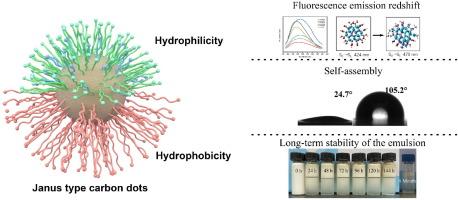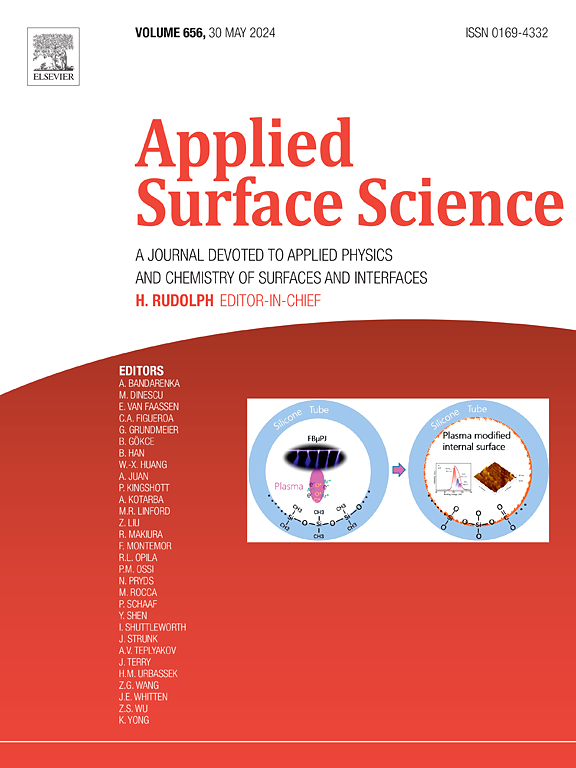Preparation and surface structure study of novel asymmetric Janus carbon dots
IF 6.3
2区 材料科学
Q2 CHEMISTRY, PHYSICAL
引用次数: 0
Abstract
Janus particles, heterogeneous bifacial particles, have gained significant interest in materials science and chemical engineering. Nanoscale fabrication of these particles poses notable challenges. Although mature techniques exist for creating Janus particles from inorganic and polymeric materials, similar advancements in carbon dots (CDs) remain unreported. This paper introduces a novel approach using a liquid–liquid interface method to specifically modify CDs suspended at the biphasic interface, resulting in the formation of carbon dots with a unique Janus-type surface distribution (J-CDs). The surface structure was analyzed using transmission electron microscopy, Fourier-transform infrared spectroscopy, X-ray photoelectron spectroscopy, elemental analysis and 13C NMR spectroscopy. By correlating their fluorescence properties with time-dependent density functional theory (TDDFT) calculations, the relationship between the fluorescent characteristics of J-CDs and their asymmetric Janus surface structures was established, further confirming their unique Janus configuration. Water contact angle tests showed that J-CDs exhibit hydrophilic and hydrophobic properties that differ distinctly from those of traditional amphiphilic CDs when suspended in various solvents and dried on a silicon substrate, underscoring their novel structure. Enhanced surface properties were demonstrated through the stabilization of Pickering emulsions and fabrication of polystyrene microspheres, showcasing the potential of J-CDs to modulate surface characteristics for diverse applications.

求助全文
约1分钟内获得全文
求助全文
来源期刊

Applied Surface Science
工程技术-材料科学:膜
CiteScore
12.50
自引率
7.50%
发文量
3393
审稿时长
67 days
期刊介绍:
Applied Surface Science covers topics contributing to a better understanding of surfaces, interfaces, nanostructures and their applications. The journal is concerned with scientific research on the atomic and molecular level of material properties determined with specific surface analytical techniques and/or computational methods, as well as the processing of such structures.
 求助内容:
求助内容: 应助结果提醒方式:
应助结果提醒方式:


